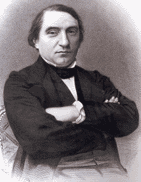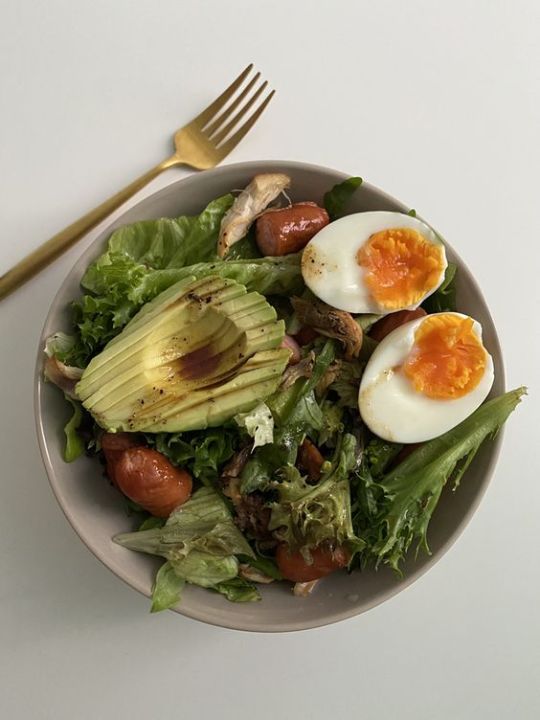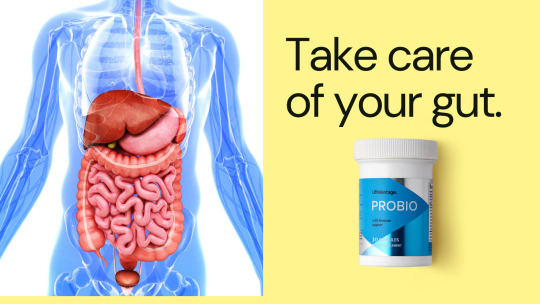#Health Nutrition Supplements
Explore tagged Tumblr posts
Text
⭐Vitamin Cheat Sheet⭐
Vitamin A: Vision, immune system, skin health.
Vitamin B1 (Thiamine): Energy metabolism, nerve function.
Vitamin B2 (Riboflavin): Energy production, skin health.
Vitamin B3 (Niacin): Cellular energy production, skin health.
Vitamin B5 (Pantothenic Acid): Metabolism, hormone production.
Vitamin B6: Brain function, mood regulation.
Vitamin B7 (Biotin): Healthy hair, skin, and nails.
Vitamin B9 (Folate): Cell division, DNA synthesis.
Vitamin B12: Nervous system, red blood cells.
Vitamin C: Immune system, collagen synthesis.
Vitamin D: Bone health, immune function.
Vitamin E: Antioxidant, skin health.
Vitamin K: Blood clotting, bone health.
Calcium: Bone and teeth health, muscle function.
Iron: Oxygen transport, energy production.
Magnesium: Nerve function, muscle relaxation.
Zinc: Immune system, wound healing.
Potassium: Fluid balance, nerve function.
Iodine: Thyroid function, metabolism.
Selenium: Antioxidant, thyroid health.
#vitamins#health and wellness#healthy living#health tips#healthyhabits#healthy lifestyle#nutrition#supplements#wellness#wellbeing#health is wealth#self care#food#healthy diet#skincare#lifestyle#green juice girl#clean girl aesthetic#fitness
39K notes
·
View notes
Text
Discover Premium Nutrition Supplements at Our Online Store

Rmi Transitions is dedicated to providing you with a carefully curated selection of high-quality products that cater to your health and wellness goals. Explore our nutrition supplements online store and embark on a journey towards improved health, vitality, and overall well-being. Contact Us: (646) 384-4092
0 notes
Text
HACKING THE MIND: HOW DIY BRAIN STIMULATION IS TRANSFORMING NEUROHACKING AND PERSONAL EMPOWERMENT
The rise of Neurohacking: enhancing your brain with DIY stimulation tools In recent years, the concept of self-optimization has taken a fascinating turn with the rise of neurohacking -an emerging movement where individuals use scientific tools to enhance their brain function. Among the various methods employed by neurohackers, do-it-yoursefl (DIY) brain stimulation stands out as one of the most intriguing and accessible ways for the peopel to boost their congnitive abilities. This essay will explore the evolutions of DIY brain stimulation, its place within the larger context of biohacking and lifehacking movements, the ethical considerations surrounding its use, and the potential future impact of neurohacking on both individual lives and society at large.

What is neurohacking and biohacking? At its core, neurohacking refers to the practice of optimizing brain function through various technological, pharmacological, or behavioral interventions. This could involve anything from using nootropic supplements to stimulate cognitive abilities and employing supplements to stimulate cognitive abilities, to employing techniques like transcranial direct current stimulation (tDCS) to improve focus or memory. Biohacking, a broader concept, refers to the practice of using scientific knowledge and DIY methods to enhance one’s biology -whether it’s through altering diet, incorporating fitness routines, or experimenting with genetic modifications. Both neurohacking and biohacking are driving by the desire to take control of one’s physical and mental state, often bypassing traditional medical or scientific gatekeepers. These movements, often referred to as subcultures, have grown in prominence over the past two decades as individuals seek to improve not just their productivity but also their well-being. At the heart of both movements is the idea that anyone -regardless of their background- should be able to access tools, techniques, and knowledge to optimize their bodies and minds.
DIY brain stimulation: the new frontier of neurohacking The DIY brain stimulation movement gained significant traction around 2011, when individuals began constructing devices that apply low levels of electrical stimulation to the brain to achieve cognitive enhancement. This practice is grounded in de science of brain plasticity -the idea that the brain can reorganize itself and form new neural connections throughout life. By applying weak electrical currents to specific areas of the brain, individuals hope to improve various cognitive functions, such as memory, focus, or problem-solving skills. While the use of tDCS and other brain stimulation techniques was once confined to research labs and clinical settings, the DIY movement has democratized these tools, making them accessible to anyone willing to experiment. As a result, DIY brain stimulation has become a small but growing subculture, particularly within online communities like Reddit, where people exchange tips, share experiences, and troubleshoot issues related to the use of brain-stimulating devices. This shift toward DIY brain stimulation is no t isolated but is part of a larger trend in the biohacking community, where individuals aim to break down the barriers between professional scientific knowledge and everyday life. Like DIY biology -a movement that seeks to make biology accessible to non-experts- DIY brain stimulation reflects a desire for self-experimentation and personal empowerment.

Neurohacking in the context of lifehacking and biohacking movements The DIY brain stimulation movement exists within a larger context of movements dedicate to self-improvement and optimization. One of the key influences on neurohacking is the lifehacking movement, which involves optimizing daily routines, habits, and personal data to improve efficiency and performance. In this sense, neurohacking can be seen as an extension of lifehacking -enhancing the brain to increase productivity, creativity, or emotional well-being. Additionally, neurohacking shares similarities with the quantified self movement, which involves tracking various metrics related to health and performance, such as sleep patterns, physical activity, or cognitive output. For neurohackers, self-quantification might involve measuring changes in cognitive performance before and after using brain stimulation devices. The ultimate goal of these movements is to optimize human potential and harness technology to enhance physical and mental capabilities. These movements, while diverse in their focus, all share a common philosophy: the belief that through self-optimization, individuals can improve their quality of life. In this context, DIY brain stimulation serves as a powerful tool for those seeking to push the limits of their cognitive performance.
Ethical considerations and risks While the DIY brain stimulation movement offers exciting possibilities for cognitive enhancement, it also raises important ethical and safety concerns. One of the main important ethical and safety concerns. One of the main issues is the lack of regulation surrounding the use of these technologies. In contrast to clinical applications, where brain stimulation is carefully monitored and administered by medical professionals, the DIY approach is unregulated and based on self-guidance. This opens potential risks, such as improper use, inadequate understanding of the technology, and the possibility of harmful side effects like skin burns or headaches. Moreover, the ethical considerations extend beyond individual safety. There are concerns about accessibility and inequality: will these technologies be used responsibly, or will they exacerbate existing societal divides, where only those with access to these tools can benefit from enhanced cognitive performance? Furthermore, there is no question of the long-term effects of brains simulation on cognitive health, particularly when used outside of a clinical setting. These concerns highlight the need for a more nuanced policy approach to neurohacking. Rather than merely regulating the use of brain stimulation devices, it is essential to consider the broader social implications of these technologies and ensure that they are used responsibly and ethically.
The future of neurohacking: empowering individuals and societies As the DIY brain stimulation movement continues to grow, its potential to reshape the way we approach brain health and cognitive performances is immense. The movement has already sparked innovation in neurotechnology and could lead to more personalized and accessible forms of cognitive enhancement. For individuals, neurohacking offers the possibility of improving mental clarity, focus and productivity, leading to better performance in personal and professional life. At a societal level, the rise of neurohacking could challenge traditional structures of power and knowledge. It empowers individuals to take charge of their cognitive well-being, by-passing medical gatekeepers and traditional institutions. This shift could democratize access to health and wellness, breaking down barriers to self-improvement and making these technologies available to a broader range of people. However, the future of neurohacking will depend on how society addresses the ethical and regulatory challenges that accompany these innovations. As the movement grows, it will be essential to find a balance between individual autonomy and collective responsibility to ensure that neurohacking remains a force for good.

Conclusion The DIY brain stimulation movement represents an exciting frontier in the broader landscape of neurohacking and biohacking. While it is part of a growing trend of self-experimentation and optimization, it also raises important ethical and safety questions that must be addressed. As more individuals embrace the power of neurohacking, it is crucial to consider the long-term implications of these technologies, both for individual users and for society as a whole. By understanding the broader social and cultural context in which DIY brain stimulation exists, we can better navigate the ethical challenges and ensure that these tools are use responsibly and for the benefit of all.
If you are needing some researches to have actuallized your web content or whatever you want, in health's matters or humanities related in health, you can ask to me at [email protected] and explain me your ideas.

Reference of the article
Wexler, A. (2017). The Social Context of “Do-It-Yourself” Brain Stimulation: Neurohackers, Biohackers, and Lifehackers. Frontiers in Human Neuroscience, 11(224). Massachusetts Institute of Technology. https://doi.org/10.3389/fnhum.2017.00224
If you are needing knowledge about what can you do for your with your nutrition and all that the nature gives you, you can ask to me at [email protected] and explain me your case.
Thank you!
#biohacking#neurohacking#do-it-yourself#DIY#nutrition#selfnutrition#supplements#healthylifestyle#health#vitamins#healthy living#aidaresearcheson
12 notes
·
View notes
Text

#junicafebaby#aesthetic#life#love#reblog#luxury#lifestyle#healthy eating#healthcare#health and wellness#health & fitness#mental health#healthyfood#wellness#health tips#healthy living#healthy#nutrition#workout#supplements
48 notes
·
View notes
Text

The Holidays are here, and so are delicious meals. Let's give our gut some extra love and support for processing these delicous foods for us and keeping our digestive system optimal and healthy 💛
#biohacking#health#supplements#wellness#guthealth#healthylifestyle#health and wellness#probiotics#healthyhabits#probioprobiotic#nutrition#healthy#digestivehealth#digestive system#digestivewellness#immune system#immunesupport#immune health
48 notes
·
View notes
Text

Vitamin cheat sheet..
7 notes
·
View notes
Text
Weight loss books have historically been rife with misinformation. A conveyor belt of diet books pretending to have the latest revolutionary weight loss "hacks", trying to grab your attention with whatever weight loss diet is trending.

What is the best diet for you? Is it the ketogenic diet? Is it intermittent fasting? Is it the 5:2 diet? Is it a low-carb diet, a low-fat diet, or one of the many rapid weight loss plans promising that you can all lose an astronomical amount of weight in a short space of time? you can visit my web site eBook free
#fitness#workout#gym#nutrition#gym motivation#weightlifting#health#healthcare#prevention#health and wellness#wellness#supplements#booklr#books#reading#book quotes#currently reading#books and reading#books & libraries#bookblr
62 notes
·
View notes
Text

Bacopa Monnieri may improve cognitive function
Bacopa Monnieri is an herb that has been used in traditional Ayurvedic medicine for centuries to improve memory, cognitive function, and overall brain health. The active compounds in Bacopa Monnieri, such as bacosides and saponins, have been shown to have neuroprotective effects and may help improve memory and cognitive function.
Here are some potential health benefits of Bacopa Monnieri:
Improves memory: Bacopa Monnieri has been shown to improve memory formation and retrieval, and may help reduce age-related cognitive decline.
Enhances cognitive function: Bacopa Monnieri may improve attention, focus, and concentration, making it a popular supplement among students, athletes, and individuals with demanding mental work.
Neuroprotective effects: Bacopa Monnieri has been shown to have neuroprotective effects, which may help protect the brain against age-related neurodegenerative diseases such as Alzheimer's and Parkinson's.
May reduce anxiety and depression: Bacopa Monnieri has been shown to have anxiolytic and antidepressant effects, which may help reduce symptoms of anxiety and depression.
May improve sleep quality: Bacopa Monnieri has been shown to promote relaxation and improve sleep quality, which is essential for overall health and well-being.
Food supplements that contain Bacopa Monnieri are widely available in the market, often in combination with other natural ingredients like Ginkgo Biloba and Rhodiola Rosea.
How and what to stack it with + more research info > here.
#bacopa monnieri#cognitive health#health#mental health#antidepressants#depression#nervou system#immune system#adaptogens#relaxation#nootropics#chronic illness#chronic pain#food supplements#nutrition#anxiety
9 notes
·
View notes
Text
🌟 Are you ready to transform your well-being? Dive into the world of health supplements and unlock your potential for a vibrant life! 💪🌈
✨ Why Health Supplements?
Boost your energy levels! ⚡
Support your immune system! 🛡️
Enhance your mental clarity! 🧠💡
Achieve your fitness goals! 🏋️♀️🏃♂️
🌼 From vitamins and minerals to herbal remedies, there’s something for everyone! 🌿💖
🌍 Join the wellness movement and start your journey today! 🌞✨
#artists on tumblr#health#healthAndFitness#healthcare#healthyEating#mentalHealth#healthy#healthyFood#vitamins#health and wellness#healthy living#health tips#healthyhabits#healthy lifestyle#nutrition#supplements#wellness#wellbeing#health is wealth#self care#food#healthy diet#skincare#lifestyle#green juice girl#clean girl aesthetic#fitnessㅤㅤㅤㅤㅤㅤㅤㅤㅤㅤㅤㅤㅤㅤㅤ#aesthetic#moodboard#aesthetic moodboard
5 notes
·
View notes
Text
Supplements that seem to be helping me a lot lately:
Omega 3-6-9 and Vitamin D3 + K2 in the morning. These have helped me with general fatigue and given me a normal functioning amount of energy. It’s also been a godsend during these colder months.
Zinc + magnesium aspartate + vit B6 at night. This one has been a lifesaver for me- I get such restful sleep, my body recovers faster after a workout and it’s also helped me with my hairfall.
#supplements#health#womens health#nutrition#feminine health#self love#healing#self care#hairfall#chronic fatigue#mental fatigue#muscle fatigue#chronically fatigued#mine
30 notes
·
View notes
Text
Chemistry behind cod liver oil

"Fish oil" and "cod liver oil" are common nutritional health products and many people confuse these two, or even consider them as the same products. In fact, the effects of fish oil and cod liver oil are totally different. The main components of fish oil are DHA and EPA, which we introduced a few days ago. DHA is important for the development and maintenance of brain and nervous tissue; EPA can be used to treat autoimmune disorders and prevent cholesterol and fat from building up in artery walls.
Cod liver oil is a dietary supplement derived from the liver of cod fish (Gadidae). The main ingredients are retinol and cholecalciferol. Retinol is an important component of photosensitive substances in visual cells and can also maintain the integrity and health of epithelial tissue structure. Cholecalciferol promotes calcium absorption, as well as phosphorus reabsorption by renal tubules.


#fish oil#cod liver oil#dha#epa#health and wellness#healthcare#nutrition#nutritional supplements#chemistrymolecule#organic chemistry#chemblr#stemblr#studyblr#did u know#interesting facts#factsmatter#amazing facts#pls share
79 notes
·
View notes
Text
Foods You Can Eat Instead of Taking Vitamins and Supplements 🍎🥥🥦🥑🍌
Vitamin A: Carrots, sweet potatoes, spinach, kale.
B Vitamins: Whole grains, meat, eggs, nuts, legumes.
Vitamin B1 (Thiamine): Whole grains, legumes, nuts, pork, fortified cereals.
Vitamin B2 (Riboflavin): Dairy products, lean meats, almonds, leafy greens. Vitamin B3 (Niacin): Poultry, fish, nuts, legumes, whole grains.
Vitamin B5 (Pantothenic Acid): Meat, poultry, eggs, avocado, whole grains.
B6: Chicken, turkey, fish, bananas, chickpeas.
Folate (Vitamin B9): Leafy greens, legumes, citrus fruits, fortified grains.
Vitamin B12: Animal products (meat, fish, dairy), fortified plant-based foods.
Vitamin C: Citrus fruits, strawberries, bell peppers.
Vitamin D: Fatty fish (salmon, mackerel), fortified dairy products, sunlight.
Vitamin E: Sunflower seeds, almonds, vegetable oils, nuts, spinach, broccoli.
Vitamin F (Essential Fatty Acids): Fatty fish, flaxseeds, chia seeds, walnuts.
Vitamin H (Biotin): Eggs, nuts, sweet potatoes, salmon, avocado.
Vitamin K: Leafy greens (kale, spinach), broccoli, Brussels sprouts.
Vitamin K2: Fermented foods (natto, cheese), animal products, leafy greens.
Vitamin L1 (Anthranilic Acid): Cruciferous vegetables (cabbage, cauliflower), legumes.
Vitamin P (Bioflavonoids): Citrus fruits, berries, onions, green tea.
Vitamin Q (Ubiquinone): Fatty fish, organ meats, spinach, cauliflower.
Vitamin T (L-carnitine): Red meat, poultry, fish, dairy products.
Vitamin U (S-Methylmethionine): Cabbage, broccoli, Brussels sprouts.
Betaine: Beets, spinach, whole grains, seafood.
Boron: Fruits (apples, pears), legumes, nuts, avocado.
Calcium: Dairy products, leafy greens (kale, collard greens), almonds.
Carnosine: Beef, poultry, fish.
Carnitine: Red meat, dairy products, fish.
Catechins: Green tea, black tea, dark chocolate.
Choline: Eggs, liver, beef, broccoli, soybeans.
Creatine: Red meat, fish, poultry.
Chromium: Broccoli, whole grains, nuts, brewer's yeast.
Chondroitin: Cartilage-rich foods (bone broth, connective tissue of meat).
Copper: Shellfish, nuts, seeds, organ meats, lentils.
Coenzyme Q10 (CoQ10): Fatty fish, organ meats, nuts, soybean oil.
Ellagic Acid: Berries (strawberries, raspberries), pomegranates.
Glucosinolates: Cruciferous vegetables (cabbage, broccoli, cauliflower).
Glucosamine: Shellfish (shrimp, crab), bone broth, animal connective tissues.
Glutamine: Dairy products, meat, poultry, cabbage.
Inositol: Citrus fruits, beans, nuts, whole grains.
Iodine: Seafood, iodized salt, dairy products.
Iron: Red meat, poultry, beans, lentils, spinach.
L-Theanine: Mushrooms, black tea, white tea, guayusa.
Lignans: Flaxseeds, whole grains, cruciferous vegetables.
Lutein and Zeaxanthin: Leafy greens (spinach, kale), corn, eggs.
Lycopene: Tomatoes, watermelon, pink grapefruit.
Magnesium: Spinach, nuts, seeds, whole grains, beans.
Manganese: Nuts, seeds, whole grains, leafy greens, tea.
Melatonin: Cherries, grapes, tomatoes.
Omega-3 fatty acids: Flaxseeds, chia seeds, walnuts, fatty fish.
PABA (Para-Aminobenzoic Acid): Whole grains, eggs, organ meats.
Pantothenic Acid (Vitamin B5): Meat, poultry, fish, whole grains, avocado
Pectin: Apples, citrus fruits, berries, pears.
Phosphorus: Dairy products, meat, poultry, fish, nuts.
Prebiotics: Garlic, onions, leeks, asparagus, bananas (unripe), oats, apples, barley, flaxseeds, seaweed.
Probiotics: Yogurt, kefir, fermented foods (sauerkraut, kimchi).
Potassium: Bananas, oranges, potatoes, spinach, yogurt.
Polyphenols: Berries, dark chocolate, red wine, tea.
Quercetin: Apples, onions, berries, citrus fruits.
Resveratrol: Red grapes, red wine, berries, peanuts.
Rutin: Buckwheat, citrus fruits, figs, apples.
Selenium: Brazil nuts, seafood, poultry, eggs.
Silica: Whole grains, oats, brown rice, leafy greens.
Sulforaphane: Cruciferous vegetables (broccoli, Brussels sprouts), cabbage.
Taurine: Meat, seafood, dairy products.
Theanine: Green tea, black tea, certain mushrooms.
Tyrosine: Meat, fish, dairy products, nuts, seeds.
Vanadium: Mushrooms, shellfish, dill, parsley, black pepper.
Zeatin: Whole grains, legumes, nuts, seeds.
Zinc: Oysters, beef, poultry, beans, nuts, whole grains.
#women health#health and wellness#healthy diet#healthy living#healthy lifestyle#womens health#health#health tips#wellness#levelupjourney#dream girl guide#dream girl tips#dream girl journey#health is wealth#clean girl aesthetic#clean girl#it girl#nutrition#supplements#organic#food#nutrients#healthyhabits#healthy life tips#self love journey#self love#dream life#dream girl
2K notes
·
View notes
Text
Discover Premium Health Nutrition Supplements at Our Online Store
Experience the convenience of shopping for nutritional supplements online. We are dedicated to providing you with high-quality supplements that support your overall well-being and promote optimal health. Choose Rmi Transitions for purchasing health nutrition supplements. Contact Us: (646) 384-4092
0 notes
Text
🌞 "The Power of Good Health 🌿💪
Embrace wellness in every area of your life. 🌸 Good health is the foundation for a happy, successful life. Discover books at Wellness Books Hub that guide you towards achieving true well-being. Let’s make each day an opportunity for growth and self-care! 🌈
#artists on tumblr#health#healthAndFitness#healthcare#healthyEating#mentalHealth#healthy#healthyFood#vitamins#health and wellness#healthy living#health tips#healthyhabits#healthy lifestyle#nutrition#supplements#wellness#wellbeing#health is wealth#self care#food#healthy diet#skincare#lifestyle#green juice girl#clean girl aesthetic#fitnessㅤㅤㅤㅤㅤㅤㅤㅤㅤㅤㅤㅤㅤㅤㅤ#aesthetic#moodboard#aesthetic moodboard
3 notes
·
View notes
Text
🌬️❄️Essential Tips for Staying Healthy During Cold and Flu Season 🤧💪
As the temperatures drop and the days get shorter, it’s that time of year again—cold and flu season is upon us! 🥶 But don’t worry; staying healthy during this season is easier than you think. Here are some essential tips to keep you feeling your best:
Boost Your Immune System: Incorporate nutrient-rich foods like fruits, and vegetables, and immune-boosting herbs like echinacea and elderberry into your diet. 🍊🥦
Stay Hydrated: Drink plenty of fluids to keep your body hydrated and your immune system functioning optimally. Water, herbal teas, and broths are great choices! 💧🌿
Get Enough Sleep: Rest is crucial for a strong immune response. Aim for 7-9 hours of quality sleep each night. 💤🌙
Wash Your Hands: Regular handwashing is one of the best defenses against germs. Don’t forget to wash for at least 20 seconds! ���✨
Stay Active: Regular physical activity helps boost your immunity. Even a brisk walk can make a difference! 🚶♀️🌟
Consider Supplements: Supplements like vitamin C, D, and zinc can support your immune health. Check with a healthcare provider to find what’s right for you! 💊🌱
Want more detailed tips and insights? Check out the full blog post for a comprehensive guide on preparing for cold and flu season!📖✨
Stay healthy and take care of yourself this season! 💖🌍
#health#magnesium#self care#winter#supernatural#vegan#supplements#artists on tumblr#healthAndFitness#healthcare#healthyEating#mentalHealth#healthy#healthyFood#vitamins#health and wellness#healthy living#health tips#healthyhabits#healthy lifestyle#nutrition#wellness#wellbeing#health is wealth#food#healthy diet#skincare#lifestyle#green juice girl#clean girl aesthetic
3 notes
·
View notes
Text
Health Benefits of #Blueberries 🫐
Nutrition Facts:
One cup of blueberries provides 25% of the daily recommended value of vitamin C and about 80 calories. It also has:
Protein: 1 gram
Fat: Less than 1 gram
Carbohydrates: 22 grams
Fiber: 4 grams
Sugar: 15 grams
The fruit is an excellent source of:
Vitamin C
Vitamin K
Vitamin A
Manganese

Blueberry Benefits:
High antioxidant levels:
Blueberries are one of the best natural sources of antioxidants. They're thought to have the highest levels of antioxidants of any common fruit or vegetable. Antioxidants help protect against free radicals, which are harmful molecules your body makes in response to things that can damage cells.
Lower cholesterol levels:
High cholesterol is unsafe for your heart because it and other substances can build up in your arteries, which carry blood throughout your body. This process is thought to be triggered when cholesterol in your blood goes through a chemical reaction called oxidization. Antioxidants in blueberries help prevent cholesterol from being oxidized.
Lower blood pressure:
Eating blueberries regularly can help reduce high blood pressure. Plant compounds called anthocyanins, which give blueberries their color, are thought to be responsible for this benefit.
Blood sugar control:
If you have diabetes, blueberries can help you better manage your blood sugar levels. Studies have shown that eating blueberries regularly can help improve insulin sensitivity in people with type 2 diabetes.
Better digestion:
Blueberries contain dietary fiber, which helps your digestive system run smoothly.
#health and wellness#healthy nutrition#good nutrition#antioxidants#diet plan#healthy food#blueberries#fruit#fruits basket#blueberry#nutrition tips#nutrition facts#daily reminder#vitamins#supplements#wellness#cholesterol#blood pressure#diabetic#diabetes#healthy snack#manganese#vitamin c#vitamin k#vitamin a#new year 2025#2025#inspiration
3 notes
·
View notes